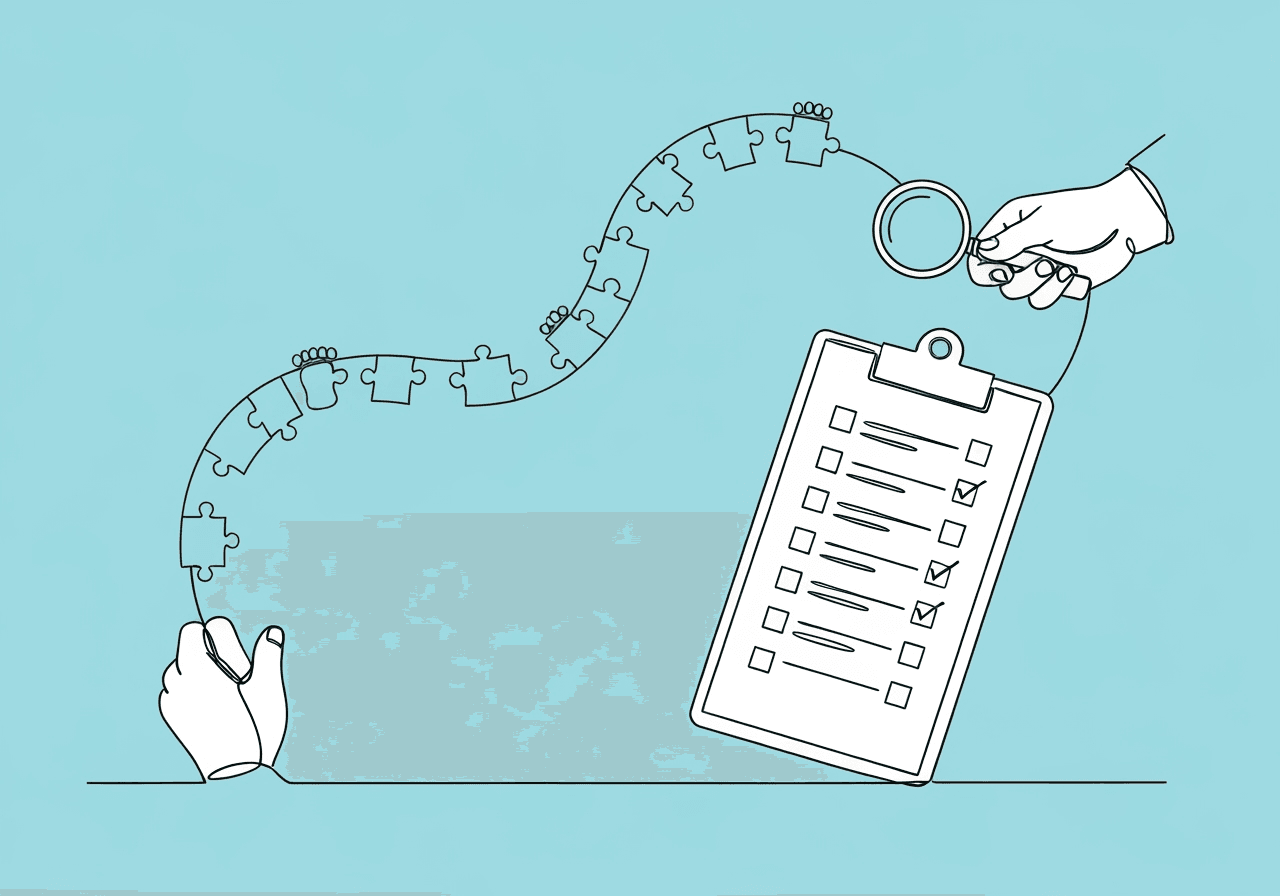Punishment Procedures Documentation: BCBA Ethics Guide

Punishment Procedures in ABA: Ethical Foundations and Misconceptions
Punishment procedures in applied behavior analysis (ABA) often face stigma, with misconceptions viewing them as harsh or outdated. In truth, the BACB Ethics Code for Behavior Analysts treats these as regulated tools for cases where positive reinforcement fails to address serious client risks. As a BCBA, strong punishment procedures documentation BCBA practices help you meet ethical standards and protect client well-being. This guide uses the BACB Ethics Code (2022) to detail documentation steps, aiding you in handling the challenges of implementation while upholding evidence-based care.
You will learn about punishment as a last-resort option under BACB 2.15. The guide covers pre-implementation steps like risk-benefit analysis and consent. It also includes data collection during use, fading and discontinuation protocols, and audit-ready records. These steps let BCBAs record practices clearly, lowering risks and boosting treatment quality.
Punishment in ABA means any outcome that lowers the chance of a behavior happening again, like response cost or time-out. It always goes with reinforcement for better behaviors to drive positive shifts. Unlike abuse, the BACB Ethics Code limits it to cases where other methods do not work, protecting client dignity and rights.
BACB Code 2.15 requires using punishment only when behaviors cause immediate harm or less intrusive options fail. This rule highlights punishment as a final choice, needing clear reasons to prevent harm. For instance, records must show that strategies like differential reinforcement of alternative behaviors (DRA) were tried first and did not succeed.
BCBAs need to separate punishment from extinction, which ignores behaviors to cut rewards and skips side effects like aggression. Ethical use follows BACB ethics punishment guidelines to keep social validity, meaning interventions suit stakeholders. As an illustration, this builds family trust, even if they doubt punishment at first. The BACB Ethics Code stresses integrating these rules for acceptable practices (BACB Ethics Code for Behavior Analysts).
Tie punishment reasons to functional behavior assessment (FBA) data in the behavior intervention plan (BIP). For more on BIP parts, check our BCBA BIP Risk Mitigation Checklist Essentials.
How to Handle Pre-Implementation Documentation for Punishment Procedures
Before starting a punishment procedure, BCBAs must document a full risk-benefit analysis under BACB Code 2.05. This checks potential harms against benefits, using FBA data to confirm the behavior's danger, like self-injury needing medical help.
List tried alternatives first, with dates, results, and charts. As an illustration, note tests of antecedent changes or positive reinforcement plans that failed to drop behavior to safe levels. Quantify risks, such as emotional upset, with baseline data from ongoing measures.
Informed consent comes next under BACB Code 2.11. Explain the procedure clearly to guardians and the client if able, like a short time-out for aggression. Cover expected results, side effects, and stop rules in a signed form. Use plain words to show how punishment supports better choices, and get assent from clients who can give it.
- Seek multidisciplinary input if required, and record professional views.
- Add a plan to stop right away if side effects appear.
- Keep records private under HIPAA rules.
The pre-implementation phase varies based on case needs and stakeholder input, allowing time for changes. For consent advice, see ABA Client Assent Documentation Guide for BCBAs, with tips on documenting side effects early.
Consider a real-world case: A child with severe aggression tried DRA for weeks without success. The BCBA documented FBA data showing risks to peers, then gained consent after explaining alternatives. This added detail shows how analysis prevents rushed starts, aligning with BACB calls for careful planning.
During Implementation: How to Track Data and Monitor Side Effects
After approval, record punishment in real time to check results and accuracy. BACB rules call for daily notes under CPT 97153 or 97155, using antecedent-behavior-consequence (ABC) details and client reactions.
Collect ongoing data, like counts of target behaviors before and after punishment, to gauge reduction. Add interobserver agreement (IOA) checks for at least 80% reliability, logged fully (ABA Study Guide on Interobserver Agreement). Note DRA uses and their effects at the same time.
Documenting side effects matters most, as punishment may cause anxiety or avoidance. Research shows common issues like more aggression or learned helplessness, so watch closely (Quantitative Systematic Literature Review of Combination Interventions). Log daily: score client mood on a 1-5 scale, spot escape moves, or note missed sessions.
- Use checklists for steady delivery, preventing overuse.
- Chart data each week for trend views in reports.
- Train RBTs on steps, recording their skill checks.
Pause and update the BIP if side effects grow, explaining why. This keeps ethics in check and fits BCBA Treatment Fidelity Documentation: BACB H-6 Essentials.
In practice, a BCBA tracked a teen's time-outs for elopement. Daily logs caught rising anxiety via mood scores, leading to quicker DRA boosts. Such examples from BACB-aligned cases highlight how real-time notes catch issues early, improving outcomes.
Post-Implementation Documentation: Fading and Discontinuation Steps
When behaviors lessen, record fading to cut punishment reliance, following BACB Code 2.12. This means slow cuts, like shifting from every time to sometimes, checked with data every 3-5 sessions.
Stop when behavior stays low (below 10% of start levels for 80% of sessions) and alternatives are strong (Gradual Change Procedures in Behavior Analysis). Write a report with before-and-after charts and side effect fixes. For service shifts, record handoffs to lighter help, keeping flow.
For checks, build a full file: FBA, consent, session info, and reviews. Keep it seven years as BACB suggests (BCBA Handbook). Clear files prove ethics during reviews.
If it fails, log new options and plans. See ABA Goal Documentation Compliance: BCBA Guide for more.
A case study: An adult client faded response cost over months, with probes showing stable low rates. The BCBA documented mastery of coping skills, easing to reinforcement only. BACB resources back this, stressing data-driven fades for long-term success and less aversive care.
Audit and Oversight: How to Prepare Punishment Records for Review
Make audit files ready by gathering proof of sound choices. BACB rules note that proven issues, like missing punishment records, may bring sanctions like suspension (BACB Code-Enforcement Procedures). Log all talks, checks, and changes with dates.
Include timed notes, charts, and Ethics Code ties. For oversight like committee looks, show links to client gains. While public audit stats on punishment are not available, BACB urges full records to cut risks and show care.
Do self-checks every quarter to spot holes, such as thin side effect logs. For prep help, view BCBA Audit Checklist: Master Documentation Compliance.
In one BACB-guided scenario, a team audit found strong graphs proving ethical use, avoiding issues. Such practices, drawn from enforcement docs, ensure files stand up to review.
Frequently Asked Questions
What are the ethical considerations when using punishment in ABA therapy?
Ethical punishment use sticks to BACB Code 2.15 as a last option after other methods fail. BCBAs record risks, get consent, and watch side effects like anxiety or aggression, per the Ethics Code (BACB, 2022). Pair it with reinforcement to respect client dignity (BACB Ethics Code).
How can BCBAs document side effects of punishment procedures?
Use daily ABC notes, mood scores, and behavior watches in sessions for side effects. Track rises in avoidance or upset, tweaking the BIP as needed. Journal research stresses watching to avoid harms like learned helplessness (PMC Article on Punishment Side Effects).
When should punishment procedures be faded or discontinued in ABA?
Fade with steady drops and alternative skills, under BACB 2.12. Stop if side effects win out or goals hit—record rules like 80% drop over two weeks. Add shift plans in reports for support (ABA Study Guide on Punishment Guidelines).
What role does informed consent play in punishment procedures documentation for BCBAs?
BACB 2.11 needs consent docs explaining steps, risks, and options simply, with guardian signs and client assent. Update for changes, keeping forms in files for openness (BACB Ethics Code).
How does BACB oversight apply to punishment procedure audits?
Audits check Code 2.15 compliance, like risk reviews and data truth. Breaches can spark probes and penalties; keep full logs and charts for ethical proof. Public audit stats lack, but solid records block actions (BACB Code-Enforcement Procedures).
Are there alternatives to punishment that BCBAs should document first?
Yes, try reinforcement like DRA or antecedent fixes before punishment, logging tries and flops in risk analysis. This fits ethical care, cutting aversive needs (Journal of Applied Behavior Analysis on Combination Interventions).
Solid punishment procedures documentation BCBA follows the BACB Ethics Code to protect clients and ensure duty. Focus on pre-work analyses, close watches, and planned fades to handle side effects and aid lasting results. Sources confirm open records build treatment strength and pass checks.
Start by auditing your BIPs, eyeing consents and charts. Train staff on side effect steps with checklists. Check new BACB info for updates, strengthening ethical ABA. This meets BACB ethics punishment rules and aids clients and families.
(Word count: 1,856)
Popular in Compliance & HIPAA
- 1
ABA Documentation Checklist: RBT Compliance Guide 2025
5949 min read - 2
BCBA Procedural Fidelity Checklist: Essential H-6 Guide
5586 min read - 3
RBT Renewal Competency Documentation Guide for BCBAs
4246 min read - 4
BCBA Ethical Documentation Best Practices
3746 min read - 5
RBT Supervision Log Audit Checklist for BCBAs
3276 min read
Popular in Compliance & HIPAA
- 1
ABA Documentation Checklist: RBT Compliance Guide 2025
5949 min read - 2
BCBA Procedural Fidelity Checklist: Essential H-6 Guide
5586 min read - 3
RBT Renewal Competency Documentation Guide for BCBAs
4246 min read - 4
BCBA Ethical Documentation Best Practices
3746 min read - 5
RBT Supervision Log Audit Checklist for BCBAs
3276 min read
Related Resources
Explore more helpful content on similar topics

BCBA Checklist: Documenting a New Behavior Intervention Plan (BIP) for Compliance
Discover the BCBA new BIP documentation checklist for seamless compliance in ABA. Learn essential steps from FBA data linkage to crisis protocols, replacement behaviors, and final audit readiness to elevate your behavioral interventions.

Essential BCBA Case Transfer Checklist for Compliance
Discover the essential BCBA case transfer checklist to ensure seamless compliance. Learn step-by-step documentation for FBA, BIP, and client transitions to maintain continuity of care.

BCBA BIP Risk Mitigation Checklist Essentials
Optimize BCBA ethical documentation using this essential BIP risk mitigation checklist. Learn key risk assessments, mitigation strategies, informed consent, safety plans, and adverse event reporting for compliant ABA practices.